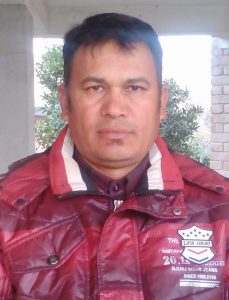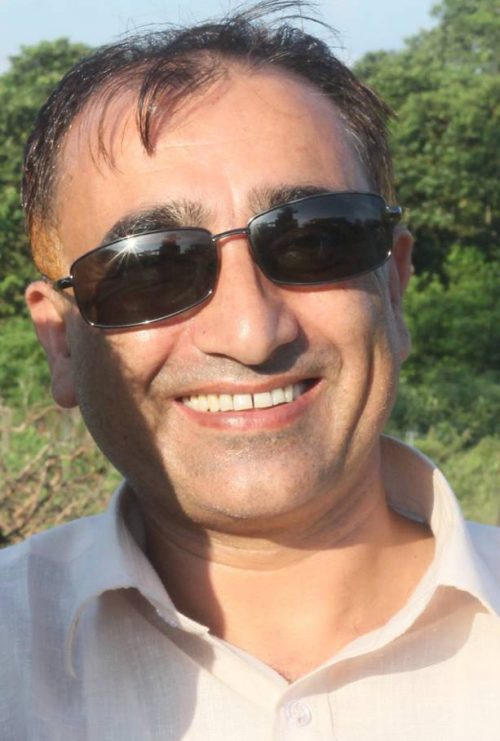– दामोदर घिमिरे
कुनै जमाना यस्तो थियो जागीर भन्ने वित्तिकै सरकारी अनि धनि हुनको लागि धानको भकारीको अतिरिक्त जग्गा जमिन र गोठभरी गाइवस्तु हुनु पर्दथ्यो । हाम्रो सामाजिक परिवेश अनि जीन्दगीका भोगाईहरु प्रत्येक मानव, जात धर्म र भौगोलिक वनावट तथा रीतिरिवाज अनुसार फरक हुनु स्वभाविकै हो । परम्परागत सोच विचार र प्रविधीको बदलामा आधुनिक शिप, ज्ञान र उत्पादनले स्थान लिएको तपाई हामी सवैले देख्दै अनि भोग्दै आइरहेका छौं । विश्व भुमण्डलीकरण भनौ वा समयको परिवर्तनले अहिलेको समयमा धनि हुन अन्नपात गाईगोरु वा खेतीपाती होइन की कुन विषय वा क्षेत्रमा दक्षता हासिल गरेको अनि के के काम गर्न आउ‘छ ? भनेर मापन गर्न थालिएको छ ।
हाम्रो समाजमा कोहि साधारण औषधोपचार, शिक्षा र रोजगार नपाईरहेका छन भने नेताहरु विदेशको महंगो उपचार तथा उत्पादन र शिक्षाको नाममा अरवौं खर्च गरिरहेका छन । एकै घरका ५÷७ जना छोराछोरी मध्ये कोहि पढ्नमा तीक्ष्ण हुन्छन त कोहि वाद्यवादन र व्यवसायमा अव्बल ठहरिन्छन भने कत्तिले अबसर पाएर पनि त्यसको उचित उपयोग गर्दैनन भने केहिले सानो अवसरमा पनि ठुलो उपलव्धि हासिल गरिरहेका हुन्छन । यस लेखमा काभे्रको धुलिखेलमा जन्मिएर आफ्नो क्षमताले भ्याएसम्मको संघर्ष गर्देै आफु, आफ्नो परिवार र समाजको विकासमा कर्मको माध्यमवाट उदाहरणीय बन्न सफल अम्विका थापाका वारेमा केहि जानकारी दिन लागिएको छ।
वि.स.२०३६ श्रावण २९ गते पिता हरिशरण र माता शकुन्तला थापाका २ छोरी र २ छोरामध्य जेठी छोरीको रुपमा काभे्र जिल्लाको धुलिखेल ७ मा जन्मनु भएकी अम्विका थापाको राशिचाही चाही वृष रहेछ । २०४२ सालमा घरनजिकैको श्रीखण्डपुर मा.वि., कक्षा १ मा भर्ना भएर शिक्षारम्म गर्नुभएकी थापाले सोहि स्कुलवाट २०५३ सालमा एस एल सी उतीर्ण गरेको पाइयो।
हिङ्ग नभएपनि हिङ्ग वाधेको टालो भनिएजस्तै राष्ट्रिय स्तरको नेता नभएपनि स्थानीय समाजसेवीको रुपमा परिचित वुवाको नाम र आमाको कठिन परिश्रमका कारण अम्विकाको वाल्यजीवन सुखमय वितेको रहेछ । एस एल सी परिक्षा दिएसंगै सिलाईवुनाई र वुट्टाभर्ने शिप सिकेर र गाँउघरका आमा,दिदी बहिनि हरुलाई प्रौढ शिक्षा समेत पढाएकी र गाँउघरका दिदी बहिनीहरुलाई अफ्ठ्यारो पर्दा उचित रायसल्लाह दिएर सहयोग पुराउदै भविष्यको रेखाकोर्ने जमर्को गर्नुभएकी अम्विकाले २०५६ साल भाद्रवाट काठमाडौं विश्वविद्यालयको केन्द्रीय कार्यालय, टेफिोन अपे्रटरको रुपमा काम शुरु भएछ।
वि.स.२०६३ बैशाख २९ गते भक्तपुरको पलासे निवासी जनक खड्कासंग मागि विवाह भएकी थापाले घर र अफिसको कामका अतिरिक्त काभे्र वहुमुखी क्याम्पस बनेपावाट २०६५ सालमा वि.कम उतीर्ण गर्न सफल हुनुभएछ ।
तनमन वचन र कर्मले तोकिएका जिम्वेवारी पुरा गरेकै कारण सेवारम्भ गरेको १८ महिनामै स्थायी सेवामा प्रवेश गरेकी थापाले टेलिफोन अपे्रटरको रुपमा १० वर्ष र २०६७ सालवाट वि.स.२०७७ सम्म रजिष्ट्रार तथा उपकुलपतिको कार्यालय, कार्यालय सहायकको रुपमा सेवारत हुनुहु न्छ।
तपाइले विश्वविद्यालयवाट २० वर्षको सेवा अवधिमा के पाउनु भयो भनेर सोधिएको प्रश्नमा ः कामगरेपछी पारिश्रमिक पाउनु त स्वभाविकै हो त्यसको अतिरिक्त मुख्यताया राम्रो संस्थागत संस्कार अन्तराष्ट्रिय स्तरमा कहलिएका व्यत्तित्वहरु संग काम गर्ने अवसर र विभिन्न संघसंस्थाका प्रमुखहरुसंगको चिनाजानी तथा कार्यगत सम्वन्ध वढाउँन पाएकोमा थापालाई गौरब लागेको पाइयो । नियमित, मासिक वा वार्षिक रुपमा तोकेरै कुनै वालवालिका वा संघसंस्थालाई सहयोग नगरेता पनि थापाले खानलाउन नपाएका, सडकमा वास भएकालाई एकल तथा साथिहरुसंग मिलेर वेलावेलामा खाद्यान्न तथा कपडा र कम्वल वाडेर सामाजिम कार्य गरेको पाइयो । २०७२ सालको भुक्पमा समेत थापाले ४÷५ जना साथीसंग मिलेर पाँचखाल खरेलथोक काभे्रका ३०÷३२ घरका दनुवारलाई राहत वितरण गरिएको रहेछ।
खानेमुखलाई जुगाले छेक्दैन अनि विवाह गर्न उमेरले रोक्दैन भनिएझैं अफिसको जिम्वेवारी सफलता पुर्वक वहन गर्दै २ जना छोराछोरीकी आमा सासुसुराकी एक्ली वुहारी भएरपनि ४१ वर्षको उमेरमा एम वि एस , अन्तिम वर्षको परिक्षा तयारीमा जुट्न जोकोहिले प्रयाशनै गर्देन । आफ्ना आमा वुवाको अतिरिक्त धुलिखेलका नगरपिता बेलप्रसाद श्रेष्ठ र छिमेकी यज्ञप्रसाद थपलियालाई आफ्नो प्रेरणाका स्रोत मान्ने थापाले काठमाडौं विश्वविद्यालयका संस्थापक उपकुलपति डा. सुरेशराज शर्मा सहित डा.रामकण्ठ माकजु श्रेष्ठ, रजिष्ट्रारहरू डा. भद्रमान तुलाधर, भोला थापा र सुवोध शर्मासंग २ देखि ६ वर्षसम्म असिष्टेण्ट बनेर काम गरेको अनुभव छ।
वि.स.२०६२ सालमा भारतको व्याङ्गलोर, पटना, जगन्नाथपुरी, रामेश्वरम, चेन्नाई पुटपर्ती, मिनाक्षी, कर्णाटक आदि सहरको तिर्थाटन गरेकी थापालाई २०७४ सालमा अफिसवाट १५ दिने चिनको ग्वांजाव, वेइजिङ्ग, सिजाजोन,गे्रटवाल सहित हानवान विश्वविद्यालय र कन्फ्युसियसको जन्मस्थान घुम्ने, हेर्ने मौका मिलेको रहेछ । स्कुल एवं कलेजमा अध्ययनरत रहँदा विभिन्न खेलकुद, दौड प्रतियोगिता, कविता तथा वतृत्वकलामा भाग लिएकी थापाले वि.स.२०६० सालमा शिक्षा मन्त्रालयवाट समेत शिक्षा पुरस्कार प्राप्त गरेको पाइयो।

सहकुल ढकाल र लक्ष्मी पोखे्रललाई टेलिफोन अपे्रटिङ्ग सम्वन्धि, सुप्रिया जोशि, निर्मला अधिकारीलाई सेके्रटेरियल तथा सरु मानन्धर लगाइतलाई कार्यालय व्यवस्थापन एवं पत्राचार सम्वन्धिको काम सिकाएकी थापालाई विश्वविद्यालयकै उपकुलपति, डा.रामकण्ठ माकजू, डा.भद्रमान तुलाधर, भोला थापा, हेमराज काफ्ले र महेन्द्रकुमार निरौलावाट काम गर्ने तौरतरिकाहरु सिक्ने अवसर मिलेछ । संघर्षमय उकाली ओलीको यात्रालाई जीबन ठानेकी थापाले आफ्ना वुवाको स्वार्गारोहण भएको दिनलाई दुःख र विश्वविद्यालयमा जागिर खान थालेको पहिलो दिनलाई सुखको दिन ठानेको पाइयो ।
उज्यालकोमा पुग्नु छ भने अध्याराको यात्रा तय गर्नुपर्छ भनिएजस्तै टेलिफोन अपे्रटरजस्तो ड्युटी समयमा १÷२ मिनेट पनि कार्यस्थान छाड्न नमिल्ने, आजकालको जस्तो मोवायल वा इमेल नभएको समयमा देश तथा विदेशका सयौं व्यत्तिहरुसंग भाका र भाषा मिलाएर कुरागर्ने अम्विकाको वोलीवचन र कार्यशैली प्रशंसनीय रहेको थियो र अहिले पनि उत्तिकै छ भनेर उपकुलपतिको कार्यालयमा ३ वर्ष र २०७४ वाट स्कुल अफ आर्टसको असिष्टेण्ट प्रोफेसर पदमा अध्यापनरत सुदर्शन दाहालले वताउनु भएको छ।
माझिले खोला तारेका यात्री २÷४ वर्षमा त्यहिवाटो फर्कदा कत्तिले विर्सेलान त कत्तिले सम्झेर वोलाउँलान त्यो यात्रीमा भर पर्नेकुरा भएजस्तै सिलौटो र लोहोराको विचमा पिसिएर मिचिएर उपभोत्ताको लागि स्वादिष्ट अचार वा मसला बनिएजस्तै कार्यालय प्रमुख र आगन्तुक विचको सेतुका रुपमा रहने सेके्रटरीको कामकाज र चार्टर एकाउण्टेण्टको अध्ययन उस्तैउस्तै हुन भन्दा फरक नपर्ला । आफ्नो अनुरोध र प्रयासवाट हालसम्म विभिन्न तह र निकायमा ५÷७ जनालाई छात्रवृत्ति र २÷४ जनालाई पुर्ण तथा आंशिक रोजगारीको पहल गर्नुभएकी थापाले ४÷५ पटक रक्तान गर्नुभएको रहेछ ।
निश्कर्षमा के भन्न सकिन्छ भने कुनैपनि मानिसले दत्तचित्तले लागिप–र्यो भने जस्तासुकै कठिन कार्य पनि गर्न सक्छ । बुवाआमा मैले पालेको छु भनेर वा पाल्नुपरो भनेर टाढिने वा जीउनी ताक्ने अहिलेको जमानामा विवाह अगाडी आफ्ना २ जना भाई र १ वहिनीको शिक्षादिक्षा आर्जनका लागि यथेष्ट लागनी र रोजगारको पहलमा समेत काध थापेका कारण अहिले आफ्ना भाइवहिनीहरु शिक्षा, स्वास्त्थ्य र इन्जिनियरिङ्गका क्षेत्रमा अव्वल बनेको देख्नपाउँदा थापाको मन गौरवान्वित हुदोरहेछे । हात्ति र हात्तिछाप चप्पल उस्तैउस्तै हुन भनिएपनि यथार्थमा उस्तै हुदैनन । जङ्गलको सिंहलाई खोरमा थुन्छु भन्न जति सजिलो छ त्यसलाई समात्न वा उशको उदेश्य वमोजम आवश्यक्ता पुरागर्दै राम र रावण अनि मानव कथित दानवविचको समन्वय गराउँन जोकोहिको भाति पुग्दैन । व्यक्ति ठुलो पदले होइन कर्मले वन्दछ भन्ने उक्तीको नमुना अम्विका थापाको आँट र कार्यशैलीवाट हामिले धेरै कुराहरु सिक्नुपर्ने देखिन्छ ।


